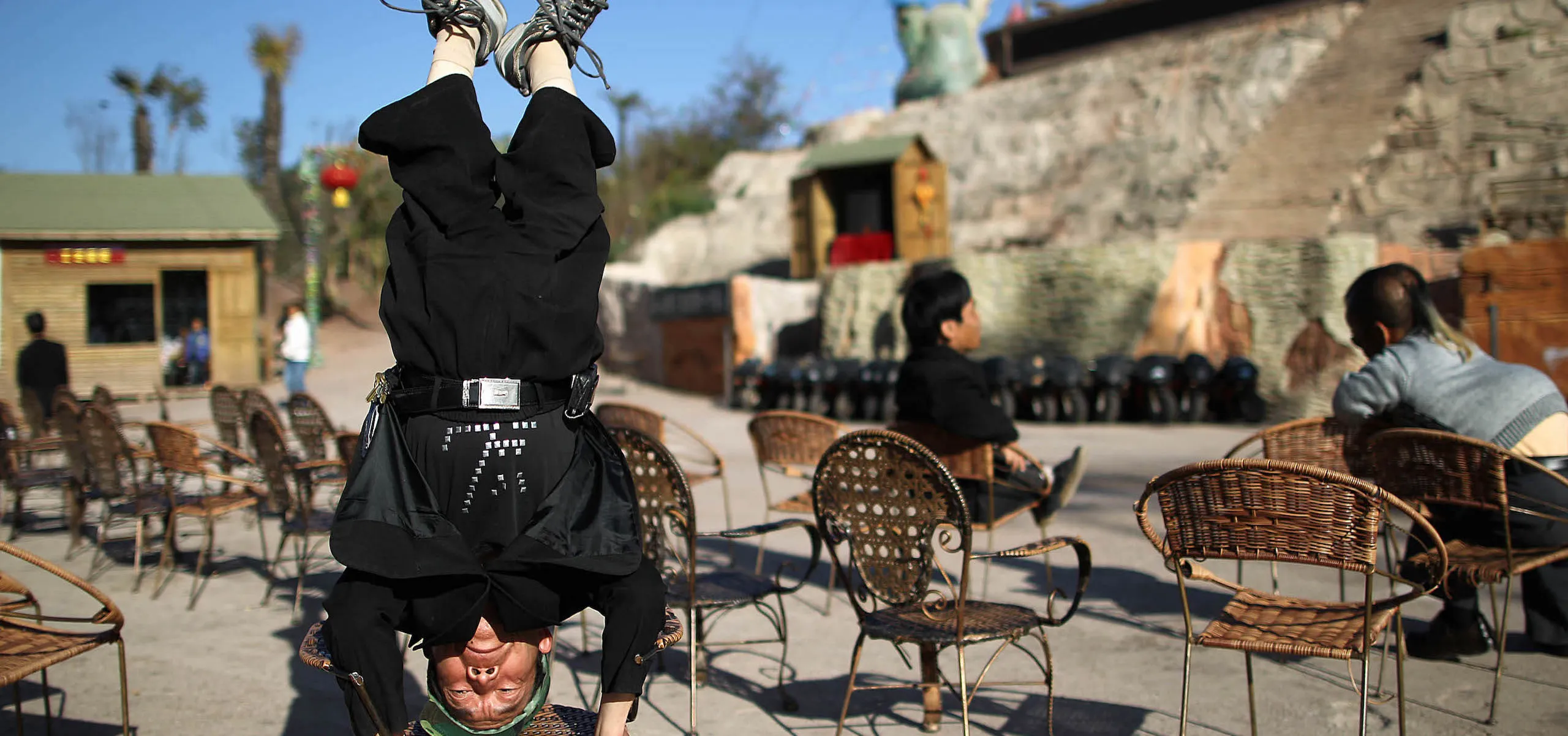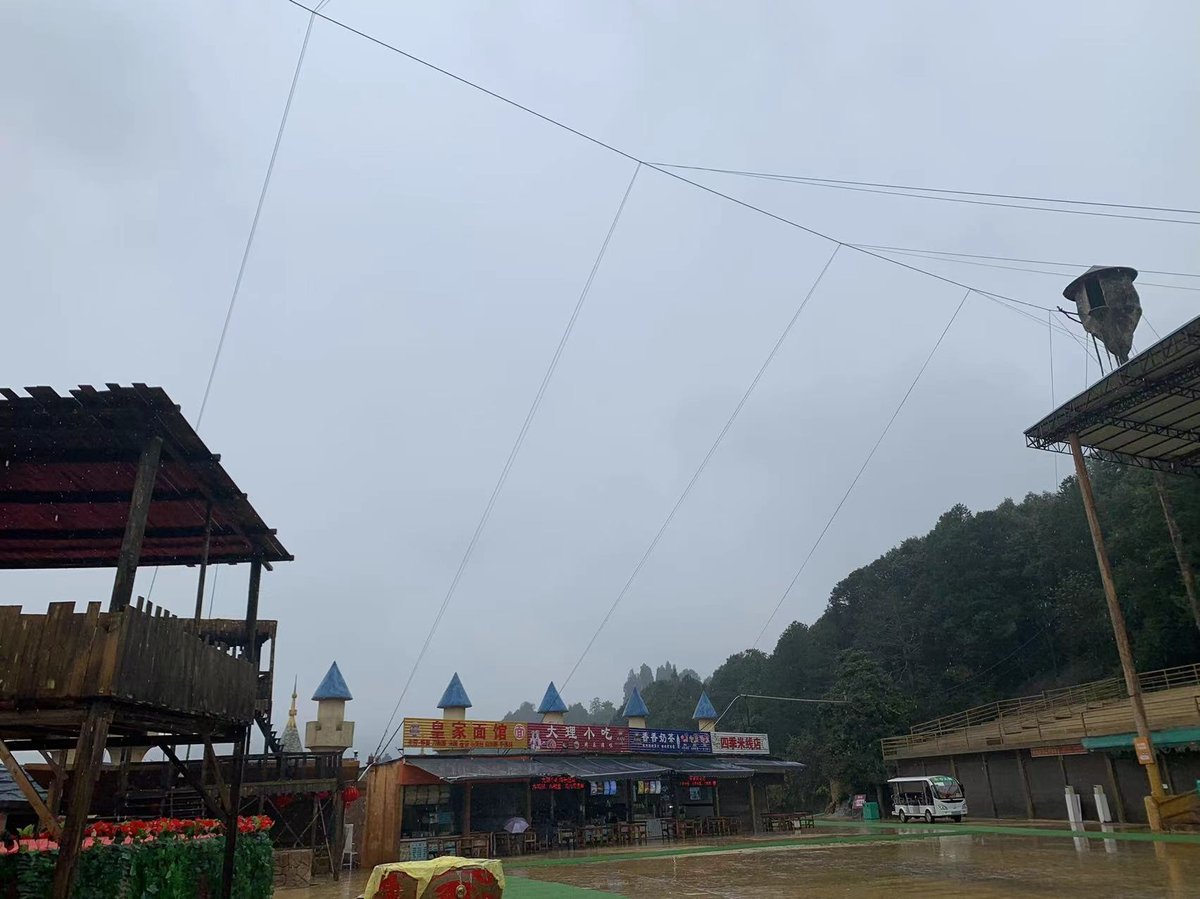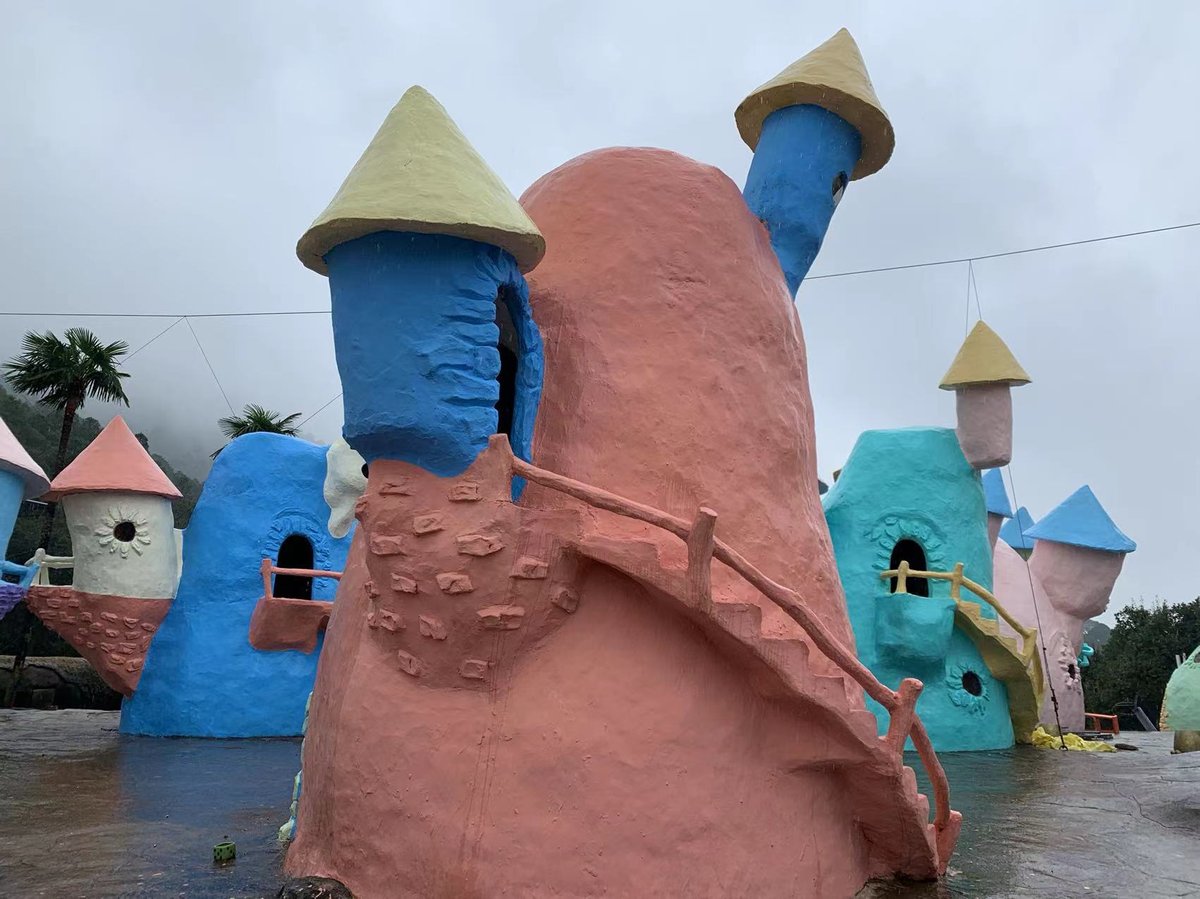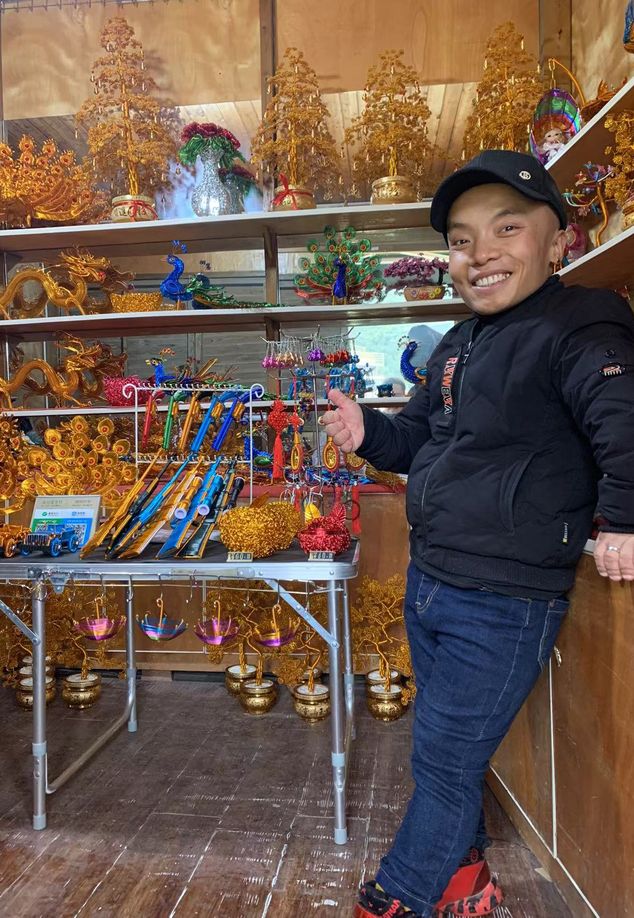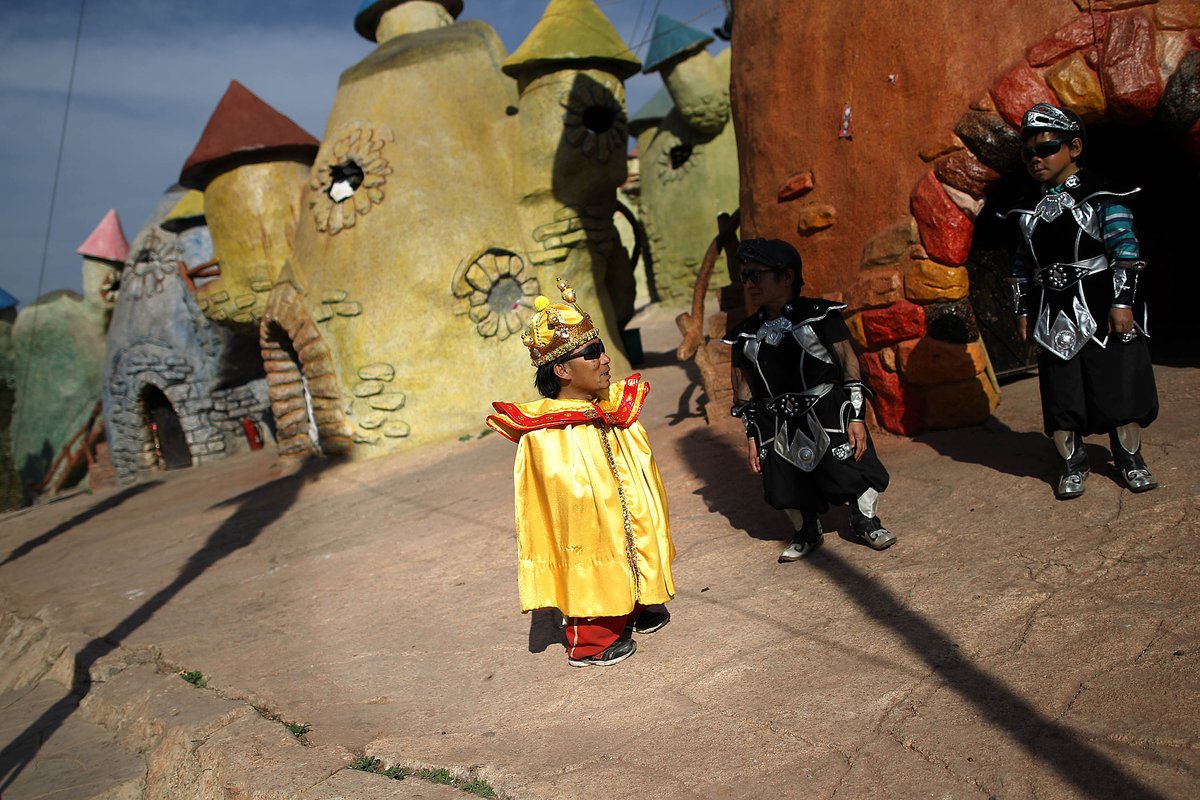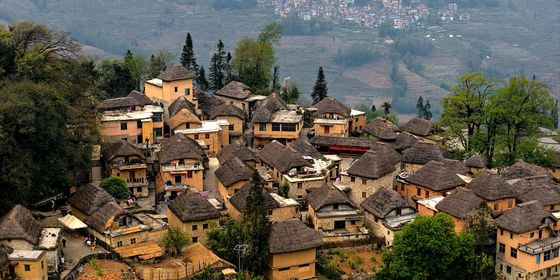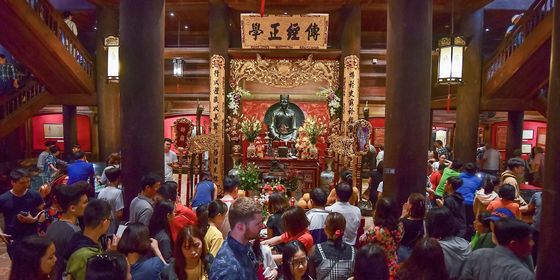A first-hand look at the controversial Yunnan theme park claiming to provide a haven for China’s “little people”
Weaving through the twisting pathways between colorful houses with roofs like mushroom caps, watching shorter-than-average park staff strolling past round wooden doors in a replica of The Shire, I get the sense that I’m walking through the pages of a Dr. Seuss book—if Dr. Seuss ever set his tales in a remote theme park in China’s southwestern province of Yunnan, and courted international displeasure for exploiting people with disabilities.
Just west of Kunming’s famous Dianchi Lake (滇池) in the provincial capital’s westernmost suburb, the “Kingdom of Little People (小人国),” or “Dwarf Kingdom,” is a theme park that has billed itself as a haven for employing and empowering people with dwarfism. For applicants of most job positions at the park, there are just three requirements: no infectious diseases, younger than 50, and under 130 centimeters (4 feet 3 inches) tall. Since opening its doors in July of 2009, the “kingdom” has raised debates about the ethics behind its business operations.
Officially part of the World Butterfly Ecological Park, the for-profit theme park is currently home to 60 or 80 “little people,” the preferred term in the English-speaking world for people with dwarfism. According to Little People of America, a non-profit organization based in California, dwarfism is a congenital condition which limits an individual’s height to under 4 feet 10 inches (147 centimeters), and may be accompanied by other conditions such as Achondroplasia and Turner Syndrome. Today, according to the Red Cross Society of China, dwarfism affects an estimated 8 million people in China.
At the Dwarf Kingdom, these little people perform in a variety of shows based on fairy tales, slapstick comedy, and, more recently, daredevil stunts. Currently, the highlight event is the tightrope walk, with just one performer in the park capable of the stunt: walking freely (without any safety-equipment) on a thin black rope, stretched sky-high across the whole length of the stage.
The theme park was founded by Chen Mingjing, a wealthy self-made real estate investor from Sichuan, who came up with the vision for the Dwarf Kingdom after meeting two people diagnosed with dwarfism on a train ride. The businessman told Time magazine in 2018, “I really pitied their situation. Their families despised them, cursed them, so they had to sleep on the street. I thought we should build a kingdom just for them.”
Today, the 14 million USD project (including the Butterfly Park) is part of a private complex near Dianchi Lake owned by Chen. The performers come from all over China, with the park allegedly seeing three to four applicants per month in pre-pandemic times. They receive a monthly wage of 1,000 to 3,000 yuan as well as food and lodging on-site, but the monthly wage comes from a relief fund provided by a third-party charitable organization for people with disabilities rather than the park itself.
However, many outsiders have compared the theme park to a medieval freak-show. International organizations, including Little People of America and Handicap International, are vocal in their opposition to the theme park’s existence, stating it supports isolation instead of integration of people with disabilities and reinforces prejudice. “What’s the difference between it and a zoo?” a Little People of America spokesperson told The New York Times in 2010.
In 2011, the China Disabled Persons Federation categorized dwarfism, which it defines as having a height of under 130 centimeters, as a “Level 4” disability—a “less-severe” form of impairment where the individual can live independently, but that also makes them eligible for less government benefits compared to those with more severe disabilities. Though Chinese law requires businesses to reserve employment opportunities for people with disabilities, local regulations typically only cover those with severe impairments, and businesses can simply refuse to comply by paying a fine. Many international organizations, on the other hand, argue that dwarfism should not be considered a disability at all.
Due to a lack of accessible facilities and the social stigma surrounding dwarfism, few little people in China can obtain an education or vocational training. Even if they find employment, wages for people with disabilities are usually half of what they would earn without impairments. China has seen other controversial initiatives to “help” little people find employment in the past: In both Zhengzhou, Henan province, and Chengdu, Sichuan province, there have been traveling “dwarf circus troupes” organized and managed by little people, which perform on TV variety shows and in scenic areas around the country.
At Kunming’s Dwarf Kingdom, an 80 RMB ticket gets visitors full access through the park. Many of the buildings are designed to be accessible to the park’s employees, with lower sinks and door handles and smaller furniture. Walking throughout the park’s massive 3,500 square-meter grounds, tourists come across a variety of set pieces reconstructing fantasy worlds and fairytale settings: large medieval castles, a village made of treehouses, a massive AF-1 airplane with a restaurant inside, the replica of The Shire (still under construction), and, of course, the mushroom houses where little people can be found relaxing, working on handcrafts, or mingling with tourists.
When I speak to some of the employees and performers at the theme park, it is clear that business has been greatly affected by the pandemic, with fewer out-of-province tourists able to visit the tucked-away park. The Dwarf Kingdom is around 30 kilometers away from downtown Kunming, with only one public bus stop nearby. Visitors who arrive by taxi usually have to ask the driver to return to pick them up at an agreed-upon time. During my visit, the parking lot is visibly empty except for two tour vans and the few small sedans with Yunnan license plates.
Yet, many of the performers remain, having built close relationships within the tight-knit community. According to one of the performance managers, most employees of the theme park stay on for at least one to two years, with some having already made it their home for 10 years, even marrying and starting their own businesses within the theme park. A 2017 CNN report also notes that some staff, as a result of working at the Dwarf Kingdom, have developed the confidence to eventually leave the park to become freelance performers or pursue other jobs.
After strolling through the performance venue area, I come across a small wooden mobile hut where an employee sells handmade wire sculptures. Introducing himself as Ah Wei from Henan province, he says he has been renting the space from the theme park management for the last two years. His wife, whom he met at the Dwarf Kingdom, is the one making the colorful handicrafts in the shop, which they’ve recently begun selling online.
“Back in Henan, I would often get laughed at for my condition if I went out in public. After hearing about the Dwarf Kingdom in Kunming, I decided to make the move,” says Ah Wei. “I have enjoyed my time here since I feel like I fit in. I can be myself around similar people.”
On my way out of the park, I stop at the Dwarf Kingdom’s Museum, which showcases the history of the theme park’s most popular performances. The most notable is the “King Dwarf,” a performer who is often seen in the photographs wearing a gold crown, a vibrant yellow traditional Chinese silk robe, and sporty sunglasses. Stills from TV shows and news reports about the Dwarf Kingdom line the walls—some of which have tried to build empathy for little people among domestic viewers, while others still exoticize their “fairytale” appearance. The last exhibit, which shares an assortment of black-and-white photos attached to personal stories shared by little people, showcases the discrimination they still face in Chinese society today, such as being abandoned by their families.
Chen has grand plans on expanding his controversial park. His future goals include hiring up to 1,000 little people to reside and work in the kingdom. The recently completed 390-kilometer high-speed train line that runs between Kunming to the popular resort city of Xishuangbanna is also expected to bring more tourist traffic to the park. Whether this will allow the Dwarf Kingdom to better connect its little people with the rest of Chinese society remains to be seen.
Photography by Anson Zong-Liscum and VCG





